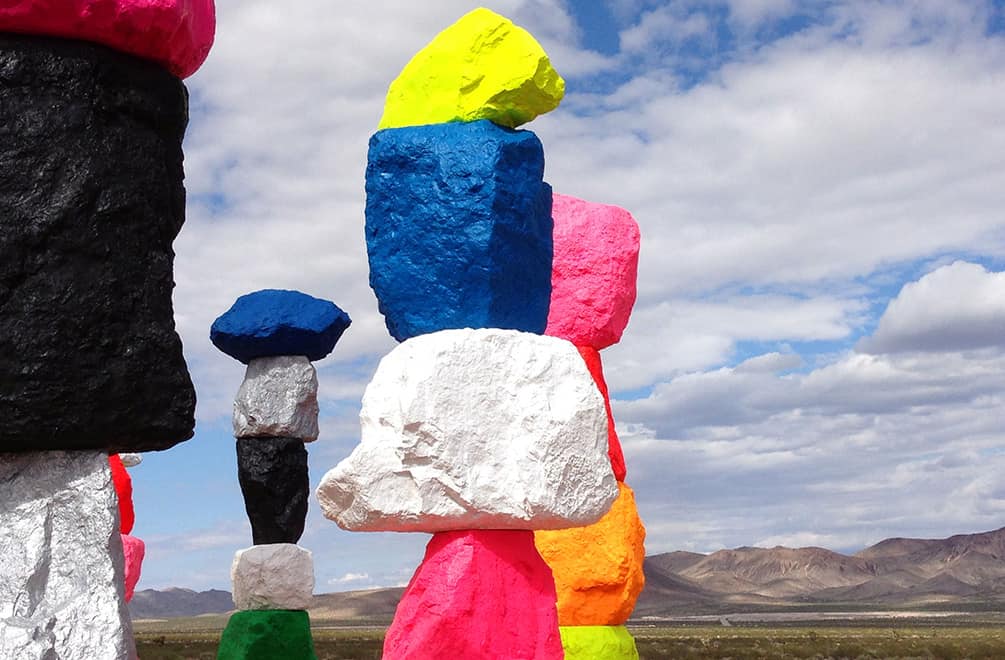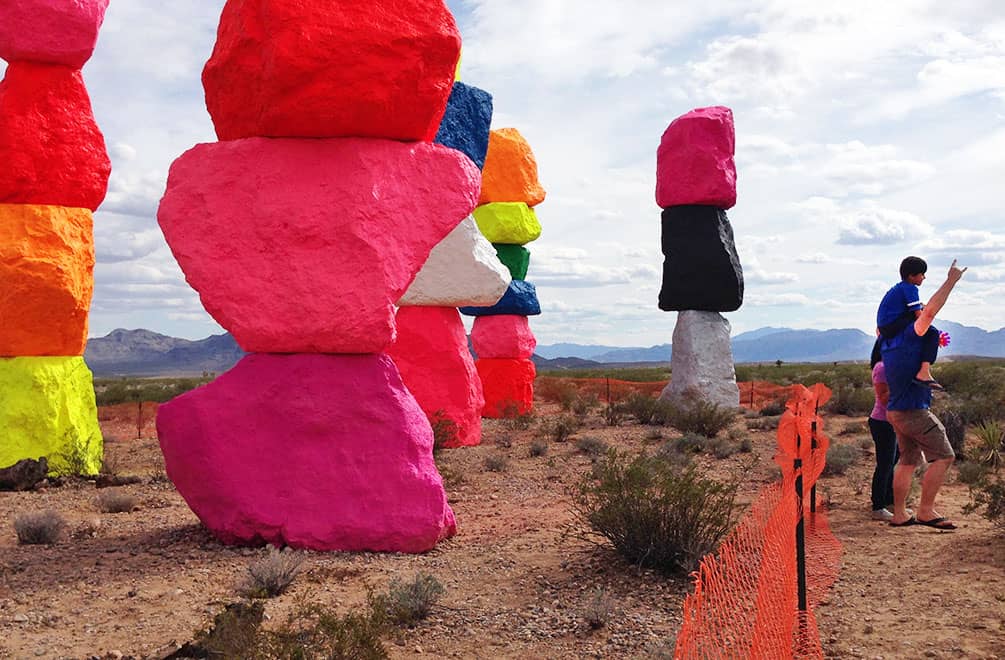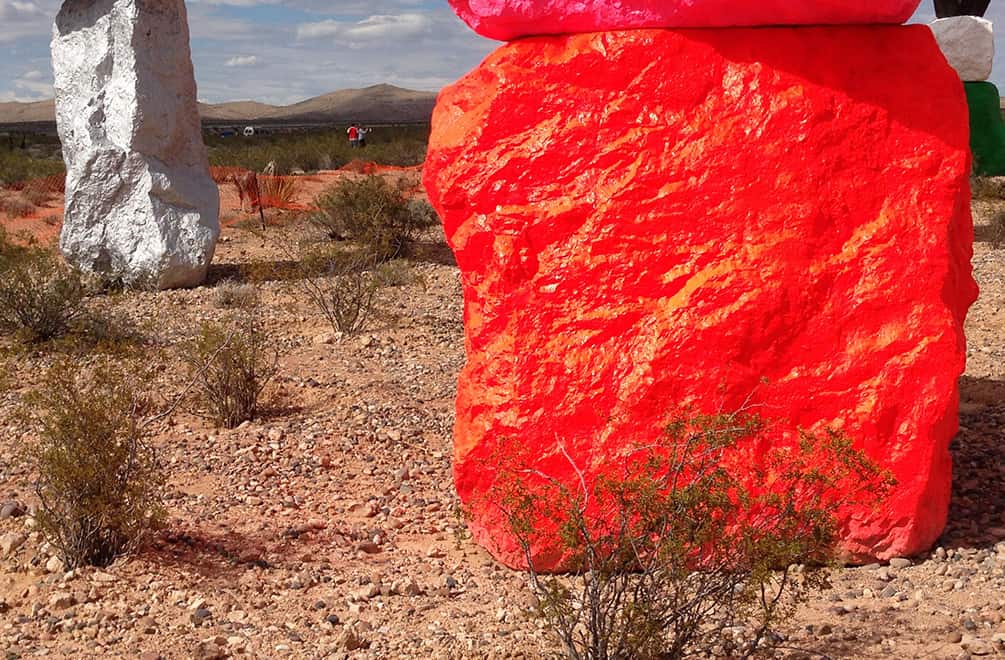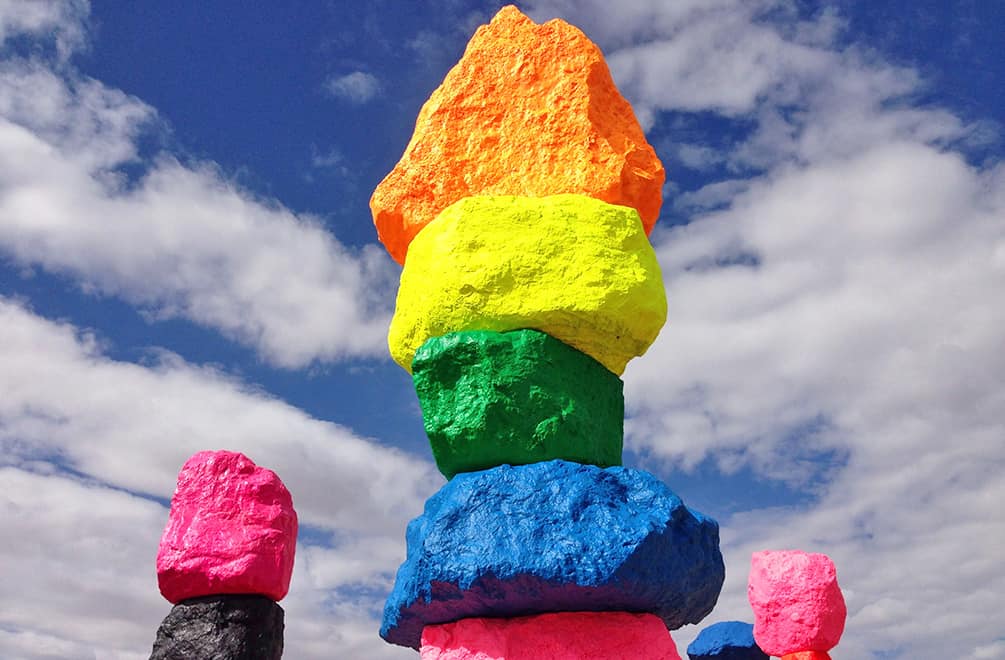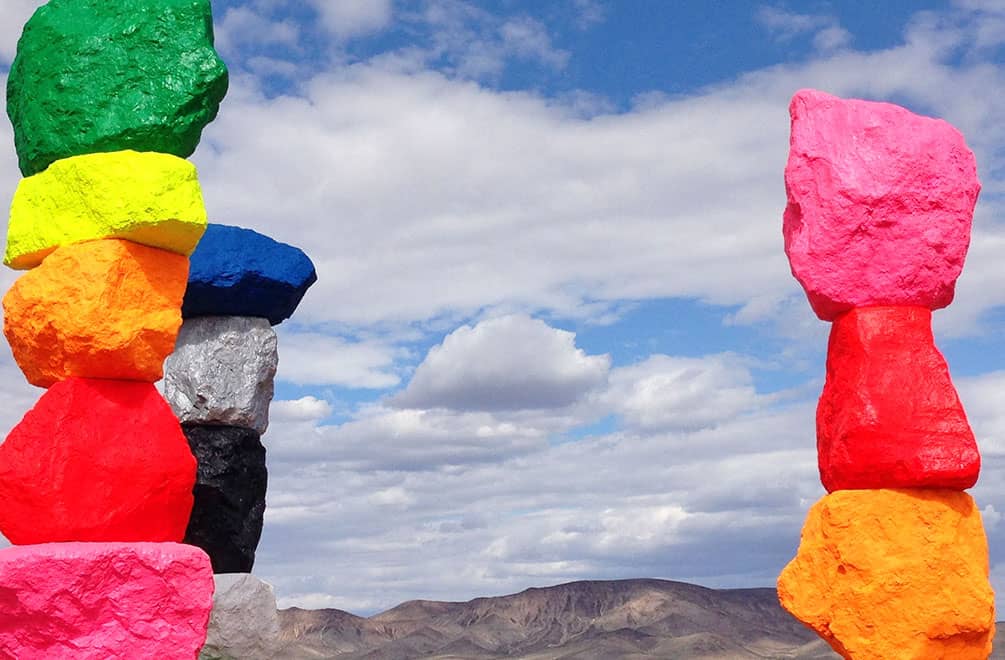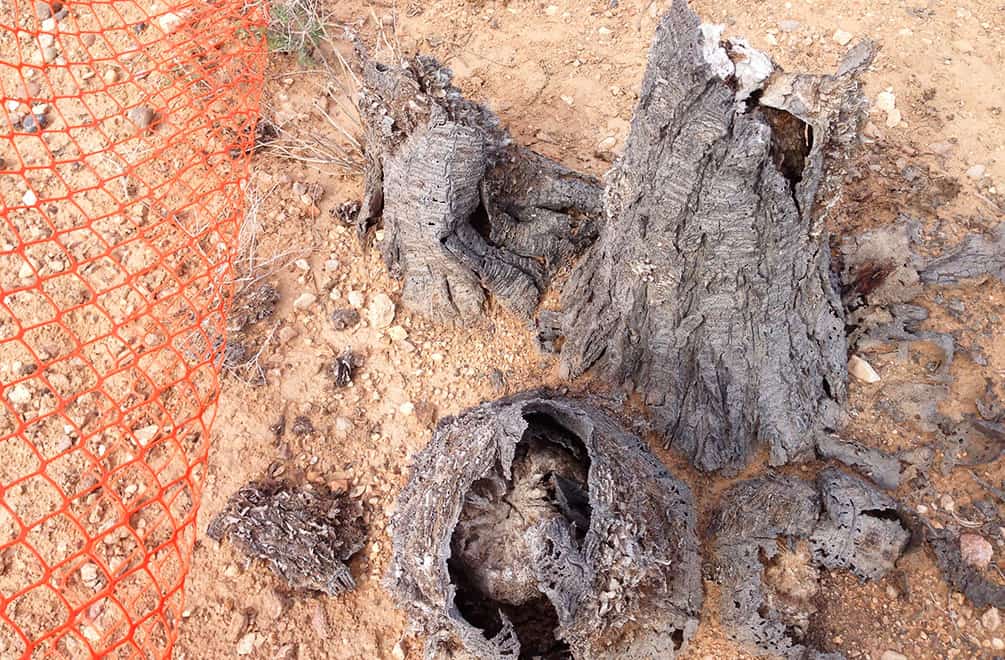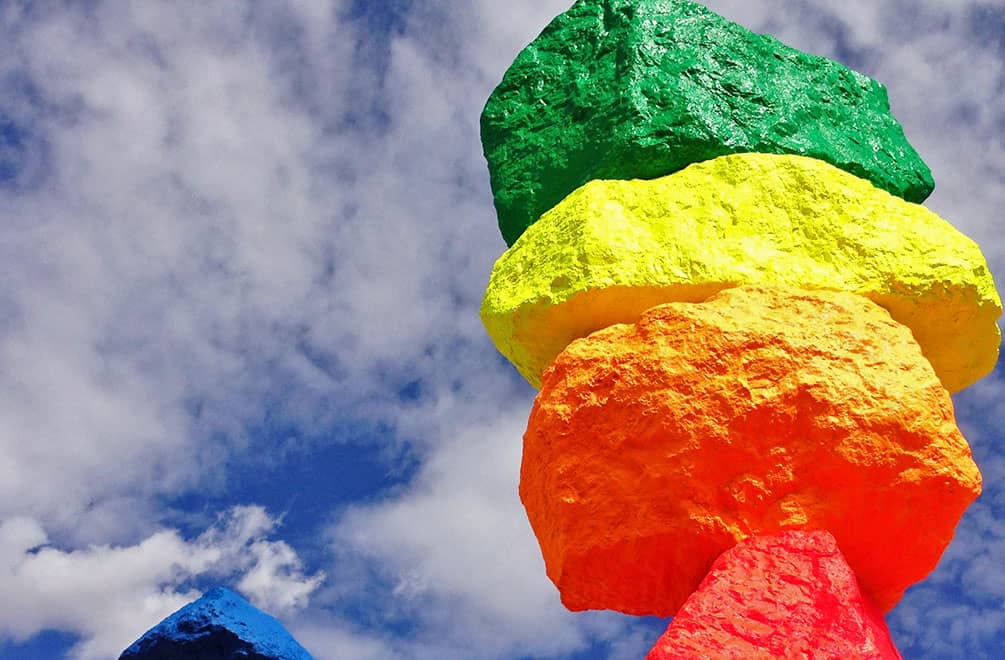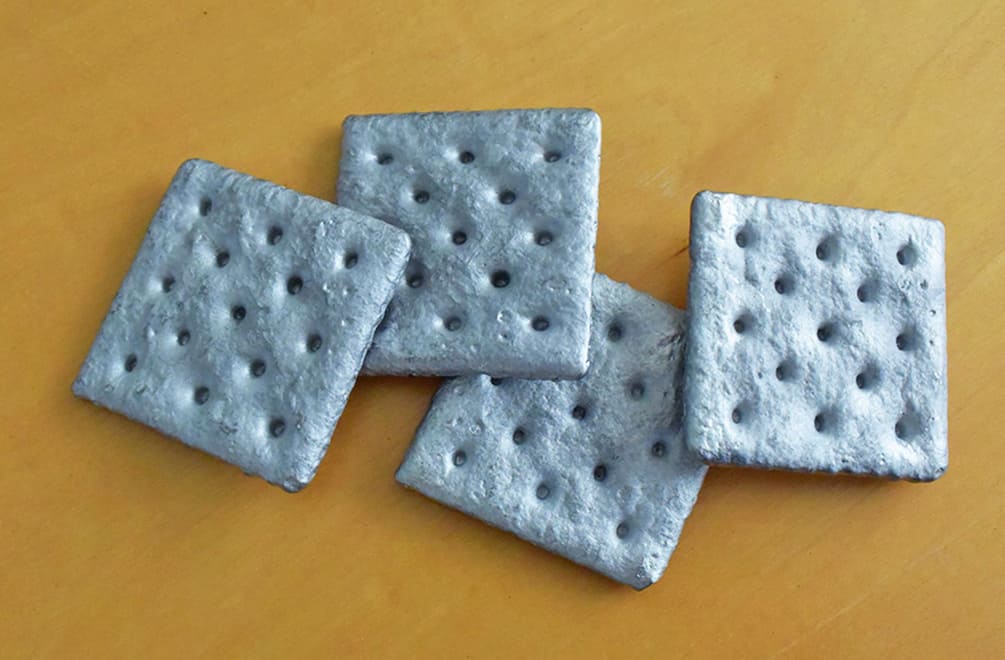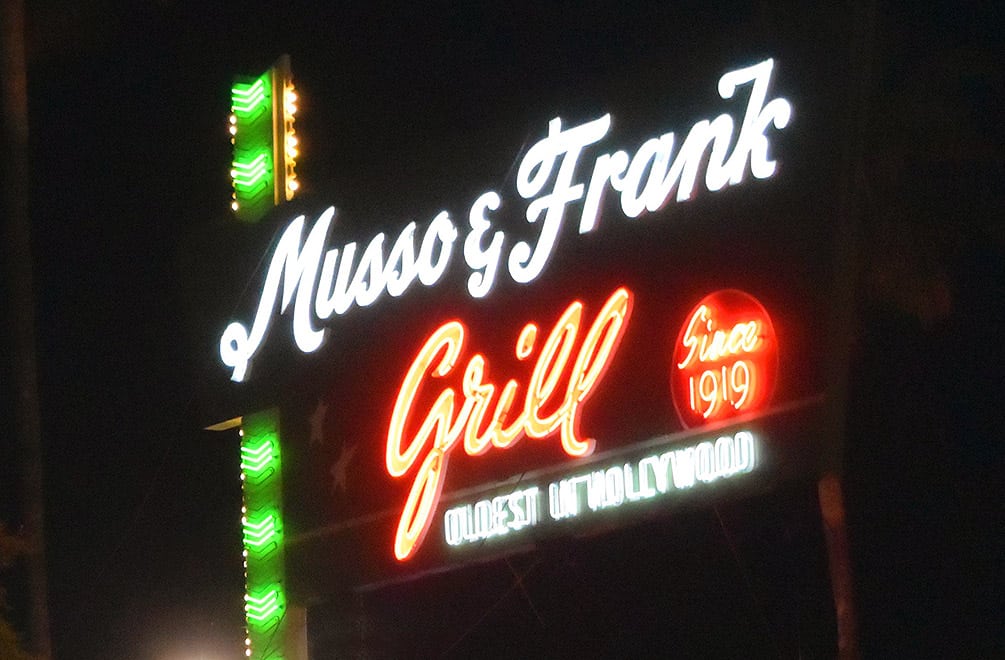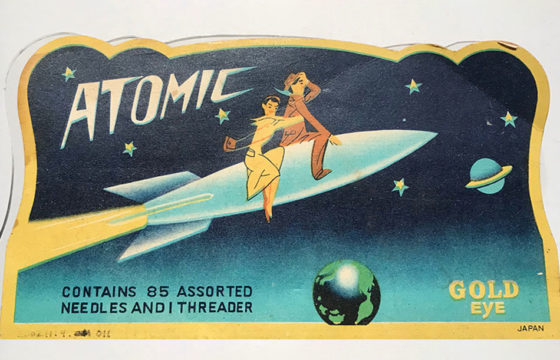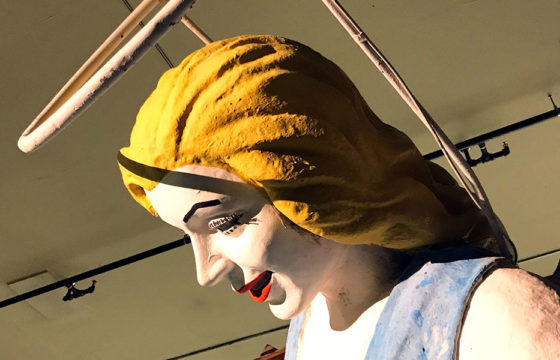Get Lucky at Seven Magic Mountains
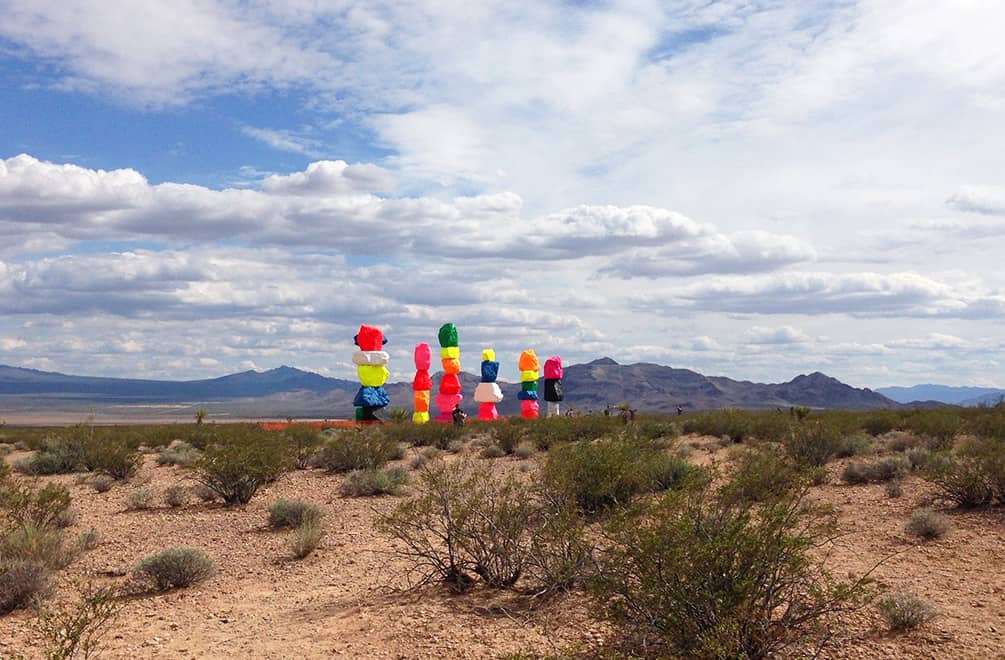
Speeding along Highway 15, I see fluorescence in the distance. Bright, slam-on-the brake, fluorescence. I don’t know what it is. But I want to get closer.
Getting off at the exit marked “Seven Magic Mountains” I see seven stacks of huge limestone boulders, painted Day-Glo colors. It is monumental in a setting that befits a monument. The surrounding landscape is a subtle bowl shape, ringed by plateaus. It is tan and sandy in the sun, purple when the clouds pass over it. The intrusion of electric color into this dusty situation — where the brain can more easily picture an old miner with a pack mule — obviously intrigues. We weren’t alone in pulling off the highway to see what this was.
Swiss born Udo Rondinone’s Seven Magic Mountains is now on view in a dry lake bed outside of Las Vegas, Nevada. (The site wasn’t officially open when I visited and still had orange mesh construction fencing around the art.) It was four years in the making, consists of 33 locally sourced boulders and was partially funded by a Kickstarter (for the moving of the rocks). Additionally, it is backed by The Aria and gaming technology giants IGT. The area itself, Jean Dry Lake, popular among ATV and 4-wheel enthusiasts, has been the focus of art installations and “happenings” in the past: Michael Heizer and  Jean Tinguely both created here. Heizer’s Rift 1 has been swallowed up by the desert, while Tinguely blew up his Study for the End of the World No. 2 himself. Even before the modern era, local inhabitants were compelled to create something to share with others: the Sloan Canyon petroglyphs. Seven Magic Mountains, however, seems a bit more accessible to the masses in comparison.
I saw all ages, couples, singles, dogs. People walking around the site, looking up, looking past the art to the hills beyond. All were curious. Kids were excited and running around. Some appeared bemused. Families couldn’t take enough photos. And I saw no one on the site who didn’t seem to be enjoying themselves. As the fence will be down today, I expect that enjoyment to be magnified as you can get right next to the stones (and right up close for those photos).
The totems inspired this family to do their version of stacking.
The stacks are pure solidity at the base,
coupled with airiness at the peaks.
Let’s face it — some of the appeal is that this is part roadside attraction. In the way oversize dinosaurs outside a freeway restaurant draw you in, the anomaly of these huge rocks in screaming color stuck in the brown of the desert beckons the driver off the highway. One simply must take the exit to see what this is. As the site is an acceptable distance from the road — not too close, not too far — one can see that visiting the stones won’t delay your arrival or departure to/from Las Vegas too much. This detour will actually enhance your trip.
And that is the brilliance of Rondinone. He selected the site, planned the scale, developed the color palette. The placement of the art as a man-made structure against the nature-made structures is an astute design decision. Many of the angles position the art framing the landscape. And he wants you to get off the highway and bear witness to his art. In his words:
“In the past, land art has been camouflaging art…by giving a layer of color, we are bringing together the pop art movement and land art.â€- Udo Rondinone
I’d translate that as,”I made this eye-catching and huge so you would get off the road and check it out. Because you don’t see this every day.” Although due to the distinctive nature of the site, I’m sure it will prove to be a popular setting for fashion spreads and car advertising.
I love that local companies like Las Vegas Paving were involved in the construction. And that the Art Production Fund partnered with the Nevada Museum of Art to bring public art to this area. There have been attempts by many to establish art in the vicinity — remember the Guggenheim Hermitage at the Venetian? Or the gallery in the Wynn? So kudos to this collective for succeeding. And to The Aria for continuing to champion public art.
Which leads me to some comments from that public I’ve seen on social media, asking the inevitable question: But is it art? To which I answer: Go there. Experience it. Are you impressed, contemplative, joyful? Are you annoyed, angry, restless? Then the answer is yes. Of course it’s art. Art installed firmly into the ground outdoors rather than a museum or gallery.
You are in the desert and you can’t forget that. Even though civilization, albeit in the form of casinos, is not that far away, there are signs to beware of venomous snakes and desiccated stumps everywhere. And, oh yeah, the heat.
But looking up at the rocks, far from contemporary conveniences yet not completely isolated, I had a feeling of wonderment. Not mystical or transformational, but a sense of being lucky to have come upon this place. Lucky to have taken the time to alter my route for awhile. Lucky the weather was perfect, the colors astounding, the clouds dramatic, the process puzzling and the rocks colossal.
UPDATE: The artwork will be on display until the end of 2021. Which is fabulous.
That’s nice. Sooo, should I go? Yes. Even if you are firmly in the camp of “It’s just a bunch of colored rocks,” everyone around was happy, taking their selfies and enjoying their discovery of the place. So there is something to the magic of the site and it may affect you too.
I’m smitten. Tell me more. The stacks have 4-inch steel rods holding the rocks together. If you’re feeling all Dwayne Johnson and want to climb up and push one of the boulders off, don’t. Oh and there are no restrooms, so hit the Gold Strike casino for your lavatory needs.
Location Jean, Nevada. Follow the brown signs for the exit. The road to the art runs parallel to I-15. Easy on, easy off.
Cost Free.
Tip The artwork will be on display until the end of 2021. The rocks recently got a new coat of paint, so see it while the paint is fresh and vibrant, before the desert takes its toll again.
